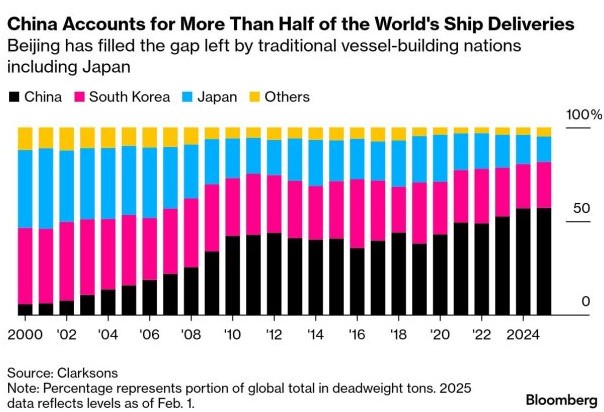U.S. Wheat Associates (USW) and the National Association of Wheat Growers (NAWG) have submitted comments to the Office of the U.S. Trade Representative (USTR) highlighting potential harm to wheat growers, grain trade, and international buyers from proposed Section 301 actions targeting China’s maritime, logistics, and shipbuilding sectors.
USW and NAWG informed the USTR that uncertainty about the proposals is already causing real problems for the grain trade and overseas customers, who are hesitant to make purchases with potentially enormous port fees looming.
No Other Choice
The U.S. wheat industry and its customers are heavily dependent on ocean-going vessels, especially dry bulk carriers, and exports are vital to this sector. About half of the U.S. wheat crop is exported each year, including around 90% of wheat grown in Washington, Oregon, Idaho, and parts of Montana.
One of the most concerning proposals is the imposition of port entrance fees, which would significantly increase export costs for U.S. wheat. For example, a proposed $1 million port fee for a vessel carrying 40,000 metric tons of wheat would equate to an 8% to 12% export tax at current prices. U.S. exporters and their customers would directly bear the impact of Chinese shipping port fees.
Importing customers who purchase U.S. wheat “Free-on-Board” (FOB) accept the risk and responsibility for shipping costs from vessel loading through delivery. China is one of the largest builders of dry bulk carriers, which move most of the world’s ocean-shipped grain, and Chinese vessels make up more than half of U.S. port calls in this category. With highly limited alternatives in the short and medium term, these proposals would substantially harm the price competitiveness of U.S. wheat and push buyers to source from other origins.

Threat to Competitiveness
One of U.S. wheat’s top international customers recently informed USW that a substantial portion of the vessels transporting their purchases “are either Chinese-owned or built in China” and would be subject to the proposed fees.
“The sharp potential increase in shipping costs would not only inflict considerable losses on [our] flour milling industry,” the customers said, “but also reduce the competitiveness of U.S. wheat in [our] market.”
A March 2025 study by Trade Partnership Worldwide LLC suggests the proposals against Chinese shipping could lead to a decline of more than 29% in U.S. wheat export sales.[1]
Lost orders for U.S. wheat would also hit barge and rail companies, local grain elevators, U.S. farmers, and their communities. USW and NAWG believe such losses are unthinkable for wheat farmers that are already facing tight margins and unfair trading practices around the world.
Logistically Infeasible
Additionally, the proposed Section 301 mandate to transport U.S. goods on U.S.-built vessels raises significant concerns. Based on decades of experience with similar mandates, USW believes that such requirements would be logistically infeasible for commercial wheat exports and the resulting increased cost would also drive down the price paid to farmers.
Revitalizing the U.S. shipbuilding industry is a laudable goal that USW and NAWG support. In fact, we joined more than 300 other organizations in a letter to the USTR stating the importance of finding real remedies to address the dominance of Chinese shipping, while also revitalizing the U.S. shipbuilding industry.
And with those industries, USW and NAWG “strongly urge USTR to reconsider the proposed remedies, which will significantly impact the millions of stakeholders who rely on efficient maritime services to move goods in and out of the United States.”
[1] Estimates by Trade Partnership Worldwide LLC derived from UNCTAD and OECD data.


